Core Web Vitals in 2025: The New Metrics You Can’t Ignore
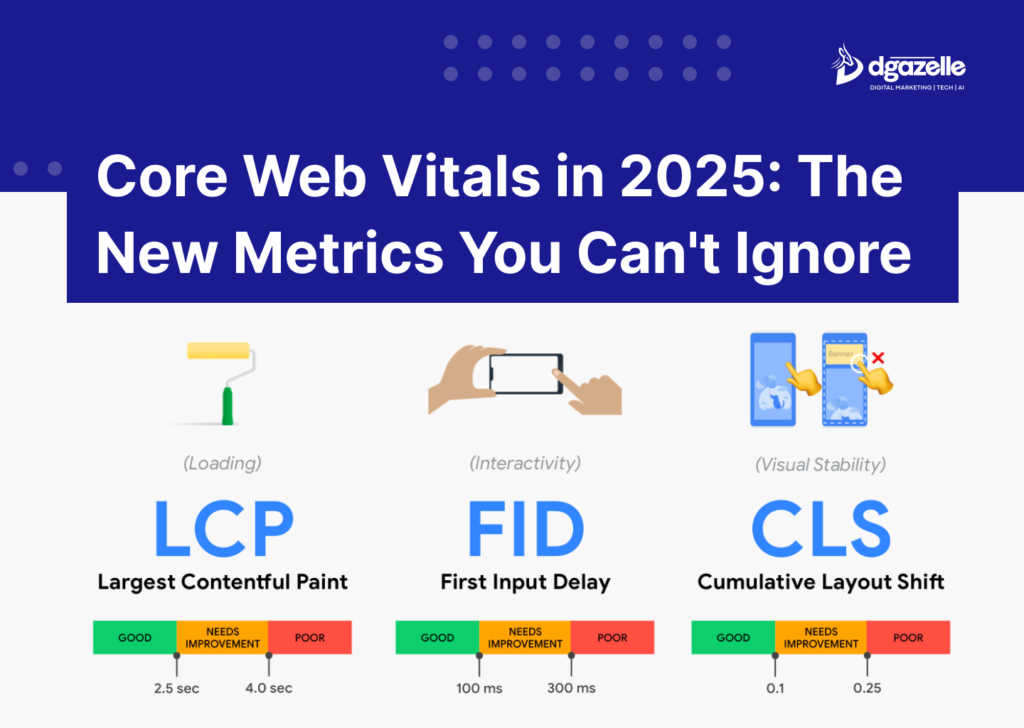
We live in a world, where every second counts and so is it on your website too. Your site’s speed, stability, and responsiveness are more than technical details—they define the quality of your visitors’ experience. For small businesses in Nigeria, where competition is fierce, getting this right is critical. Google’s Core Web Vitals focus on three key aspects: Loading Speed, Layout Stability, and Responsiveness. These metrics have become essential benchmarks for ranking and user satisfaction. Optimizing for Core Web Vitals in 2025 isn’t just about staying competitive; it’s about thriving online. While we often prioritize keywords, mobile optimization, and backlinks, Google emphasizes on-page experience. Core Web Vitals measure how well your site loads, responds to actions, and maintains visual stability. This guide simplifies these evolving metrics and highlights their impact on small business rankings. Learn how to deliver a stellar user experience and keep your site ahead of the competition. What Are Core Web Vitals? Core Web Vitals are Google’s way of measuring a website’s user experience across three critical areas: These metrics aren’t just numbers—they shape user perception and influence how long they stay on your site, directly impacting conversions. Why Should Small Businesses Care About Core Web Vitals? Better SEO Rankings Google uses Core Web Vitals as a ranking factor, giving small businesses a chance to compete against larger brands without a massive marketing budget. A poor performance on these metrics not only drops your ranking but can also make your website seem less credible. Happier Customers No one enjoys visiting a slow or glitchy website. Optimized websites that load quickly, respond instantly, and remain stable create a seamless, enjoyable user experience. Happy customers are more likely to trust your business and return. Higher Conversions Fast websites are proven to boost conversion rates. For small businesses, even slight improvements can translate into significant growth. By prioritizing Core Web Vitals, small businesses can improve SEO rankings, enhance customer satisfaction, and ultimately drive more revenue—all while keeping user experience at the forefront. The 3 Core Web Vitals 1. Largest Contentful Paint (LCP)? Largest Contentful Paint (LCP) measures the speed at which your page’s primary content becomes visible to users. It reflects how fast the largest on-screen element, like a headline or hero image, loads, signaling your page is ready for interaction. What Contributes to LCP are: Why is LCP Important? A slow LCP frustrates users and drives them to competitors. Fast-loading pages improve user satisfaction, boost conversions, and enhance Google rankings. LCP Score cane be: Use PageSpeed Insights to identify LCP bottlenecks and ensure your site delivers a fast, seamless experience. Prioritizing LCP isn’t just technical—it’s a competitive edge. 2. Interaction to Next Paint (INP) Interaction to Next Paint (INP) gauges how quickly a webpage responds to user actions like clicks, taps, or keypresses. It tracks the longest delay during interactions, showing the site’s responsiveness in real-world use. How Does INP Work? Why is INP Important? Introduced in March 2024 as a Core Web Vital, INP offers a broader view of site responsiveness than its predecessor, First Input Delay (FID). Optimizing INP ensures smooth interactions, boosting user satisfaction and Google rankings. An INP Score ranges from: 3. Cumulative Layout Shift (CLS)? Cumulative Layout Shift (CLS) measures unexpected content movements during page loading, reflecting the visual stability of a site. Common Causes of CLS Why is CLS Important? A stable layout ensures a frustration-free experience, especially on e-commerce sites, where sudden shifts can disrupt clicks, purchases, and user trust. A strong CLS score improves usability and customer retention. Google recommends a CLS score of ≤ 0.1 for a stable experience. Scores are calculated by combining: How to Improve Core Web Vitals Improving Core Web Vitals is crucial for enhancing your site’s user experience and SEO rankings. Here’s how to optimize each metric: Largest Contentful Paint (LCP) Interaction to Next Paint (INP) Cumulative Layout Shift (CLS) Regularly monitor progress with tools like PageSpeed Insights or Lighthouse for continuous improvements. Conclusion Core Web Vitals and SEO are intertwined, making them critical for outperforming competitors and maintaining strong rankings. Regardless of your industry, prioritizing Core Web Vitals enhances user experience and SEO performance, driving better engagement, conversions, and business success. Transform your site with a design that scores high on Core Web Vitals and drives results. Let Dgazelle create a fast, responsive, and user-focused website for you today!
The Risk of SEO Over-Optimization in Website and How to Avoid it
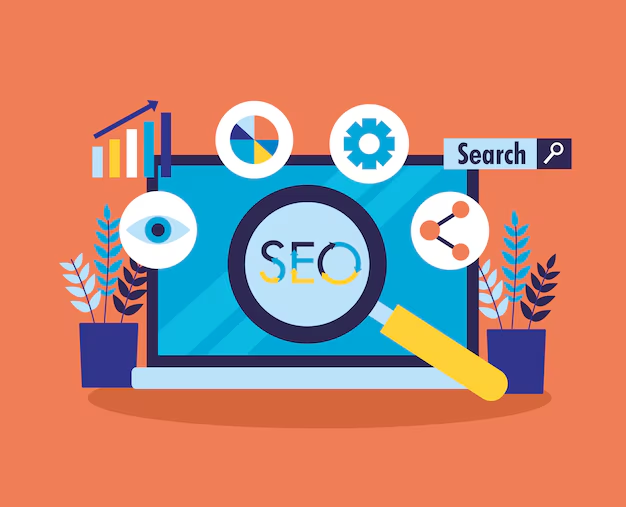
Search engine optimization (SEO) is a powerful tool for increasing visibility and ensuring that your content, products, or services reach the right audience. When done correctly, it enhances your website’s ranking on search engines, helping potential customers discover your offerings. However, just like with anything, it’s possible to go too far with SEO—leading to what’s known as SEO over-optimization. Google has pointed out that while SEO is beneficial, there are limits. Over-optimizing a website can lead to penalties, diminishing its performance rather than improving it. Over-optimization occurs when excessive SEO tactics are applied to a website, making it harder for search engines to recognize and rank the page effectively. The result? What started as good practice can actually hurt your rankings. What Is Over-Optimization? Over-optimization in SEO occurs when you go beyond the necessary practices to push your website to the top of search results. This often happens when you overuse keywords, excessively link to the same phrases, or engage in tactics designed solely to manipulate search engine algorithms. While SEO is important for visibility, Google and other search engines penalize over-optimization because it can negatively impact the user experience (UX). A website that’s overly optimized may feel unnatural or stuffed with keywords, making it harder for visitors to navigate or engage with. This can lead to lower rankings or, in extreme cases, removal from search results altogether. Instead of focusing solely on search engines, it’s essential to create quality content that resonates with users and uses keywords and links naturally. By prioritizing human readers over bots, you can build a website that’s both search-friendly and user-centric. Why Is Over-Optimizing Bad for SEO? Over-optimizing can cause significant SEO issues because search engines may view it as an attempt to manipulate rankings, rather than offering genuine, valuable content. Search engines prioritize high-quality content that provides real value to users. If over-optimization leads to low-quality content that doesn’t meet users’ needs, it creates a poor experience. No one wants to click on a link only to find irrelevant or poorly-written content. This not only frustrates users but also undermines the credibility of search engines. Tactics like keyword stuffing or excessive link building violate Google’s spam policies and can result in penalties, manual actions, or even a drop in rankings. To avoid these risks, focus on creating content that is valuable, relevant, and user-friendly, rather than trying to game the system with excessive SEO tactics. Common Over-Optimization Practices to Avoid Understanding SEO best practices is crucial to avoid over-optimization. Here are some key pitfalls: De-Optimizing Content De-optimizing content is about identifying and fixing over-optimization issues to enhance both SEO and user experience. Begin by reviewing your content for overused or forced keywords, excessive anchor text optimization, and duplicate content. You can do this manually by carefully reading and comparing your content, or use a tool like Semrush On Page SEO Checker to analyze your site’s content. The On Page SEO Checker, among other metrics, automatically calculates your content’s keyword density (the ratio of keywords to total word count) and compares it to that of your top 10 competitors. Best Practices for SEO Optimization Conclusion In conclusion, successful SEO optimization involves striking the right balance between appealing to search engines and providing an excellent user experience. Over-optimization, where too much focus is placed on technical SEO, can make your site feel forced and lose sight of the bigger picture. While technical SEO is essential, the real impact comes from creating high-quality, engaging content that naturally integrates relevant keywords. At Dgazelle, we specialize in delivering tailored SEO strategies that improve your rankings and boost user experience. Contact us today to get started on enhancing your SEO with expert analysis, content optimization, and technical solutions that drive results!
How to Increase Webpage Speed: 10 Essential Hacks
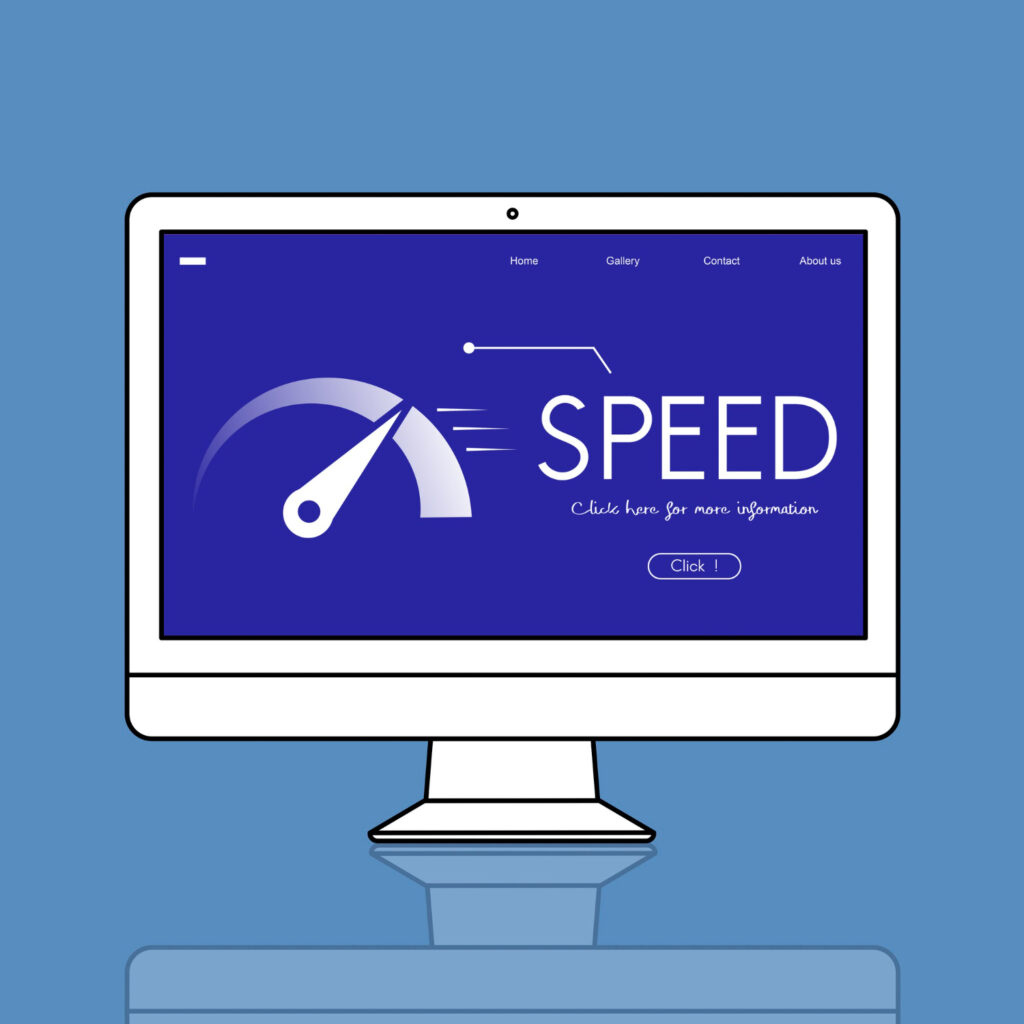
Optimizing your website to load and display more quickly is known as webpage speed optimization. A number of variables, such as the kind of material on the website and user expectations, can affect the “optimal” speed of a website. Nonetheless, it is generally advised that a web page load in two to six seconds as a general rule. Why is webpage speed important? The demand for quick websites is growing as surfing habits change and attention spans get shorter. Here’s why it’s so important to optimize the loading time of your website: How webpage speed is measured Accurately measuring a webpage’s speed is the first step in successful optimization. The following are some methods for methodically testing and evaluating the functionality of your website: These tools give you insights into how different factors impact your overall speed in addition to helping you understand how quickly consumers can load your website. You can make sure that your website provides all users with a quick, effective, and pleasurable experience by continuously monitoring and improving its performance. Best Practices to improve webpage speed Enhancing your website’s speed is crucial for providing a better user experience and improving your site’s SEO – but how do you even start? Here are some best practices that can significantly cut down your load times and boost performance. Optimize Media Although they are among the simplest to optimize for speed gains, images frequently account for the largest portion of a page’s overall size. Before you post an image to your website, start by making it smaller. Load times can be unduly increased by uploading larger-than-necessary photos and subsequently reducing their size. Another option is to attempt compressing them using programs like TinyPNG, Adobe Photoshop, or online compressors that lower file sizes without sacrificing quality. Lastly, be sure to select the appropriate format. For instance, PNG works well for photographs that need transparency, whereas JPEG is better for pictures with a lot of color. Compared to JPEG and PNG, WebP is a more recent format that offers better quality outcomes with fewer file sizes. Optimize fonts Although web fonts are necessary for contemporary web design, improper use of them can cause your site to load more slowly. You may prevent fonts from slowing down your website’s speed by optimizing their loading. Selecting the appropriate format is the best course of action in this situation. For web fonts, choose contemporary, effective formats like WOFF2, which offer superior compression and quicker load times. Font-display should also be used. With the use of this CSS feature, you may manage the way fonts appear while they load, perhaps preventing text from becoming invisible while loading (also known as Flash of Invisible Text, or FOIT). Make Javascript smaller. Although JavaScript is frequently essential for creating dynamic and useful websites, improper use of it can have a major negative effect on how quickly pages load. Without affecting the functionality of your code, minifying JavaScript entails removing any extraneous characters, including whitespace, newline characters, and comments. Make CSS smaller. Minification is a straightforward but powerful technique to improve the functionality of your website. It entails making the code more efficient through optimization. The following explains minification’s operation and significance: File sizes can be greatly decreased by eliminating extraneous characters, spaces, comments, and other components that the server doesn’t need to process the code. Because there is less data to send, this condensed version of your JavaScript or CSS loads considerably more quickly.The process of minifying your CSS and JavaScript files can be automated with a number of tools. For instance, developers wishing to incorporate minification into their workflow frequently choose CSSNano and UglifyJS. Render blocking assets JavaScript and CSS files known as render-blocking resources stop a page from being seen until they have finished loading. Although they are frequently essential resources, improper management of them might cause a considerable delay in page rendering. Techniques for managing resources that block rendering: Determine which CSS is essential and insert it straight into the HTML by inlining it. This aids in rendering the website layout prior to loading the full CSS file.Reduce unwanted CSS/JS: Tree shaking can get rid of unnecessary JavaScript code, which lowers file sizes, and tools like PurgeCSS or UnCSS can assist you in getting rid of unwanted CSS rules. Caching One technology that is essential to the transmission of content, particularly for websites with a worldwide audience, is caching. A material Delivery Network (CDN) makes sure that your material is always accessible to your users by keeping copies of your assets in several carefully chosen data centers. This close proximity improves the speed and responsiveness of your website by drastically cutting down on the amount of time it takes for data to go between the server and the user. Because traffic is offloaded to CDN servers, your origin server must process fewer requests, which lowers latency and server strain. This enhances your server’s scalability and stability while also speeding up the website for users. Steer clear of large DOM sizes. Your website may become noticeably slower if the Document Object Model (DOM) is too big. It may take longer for a page to load and render if the DOM is huge since there are more nodes for browsers to parse. By reducing the amount of superfluous nesting in your HTM, staying away from inline styles and superfluous scripts that might make your page appear larger, and use contemporary, effective CSS for layout and design, you can minimize the need for extra HTML components. Take advantage of CDN When it comes to speeding up the loading of your website, a Content Delivery Network (CDN) is revolutionary. In order to guarantee that your site’s static files (such as CSS, pictures, fonts, and JavaScript) are delivered from the server nearest to your user, CDNs store cached versions of your website in several different geographic regions. Key Benefits of Using a CDN: Consider your hosting company. The performance of your website is greatly influenced by the hosting service
Website Redesign or Refresh? How Often Should You Update Your Website Look And Feel
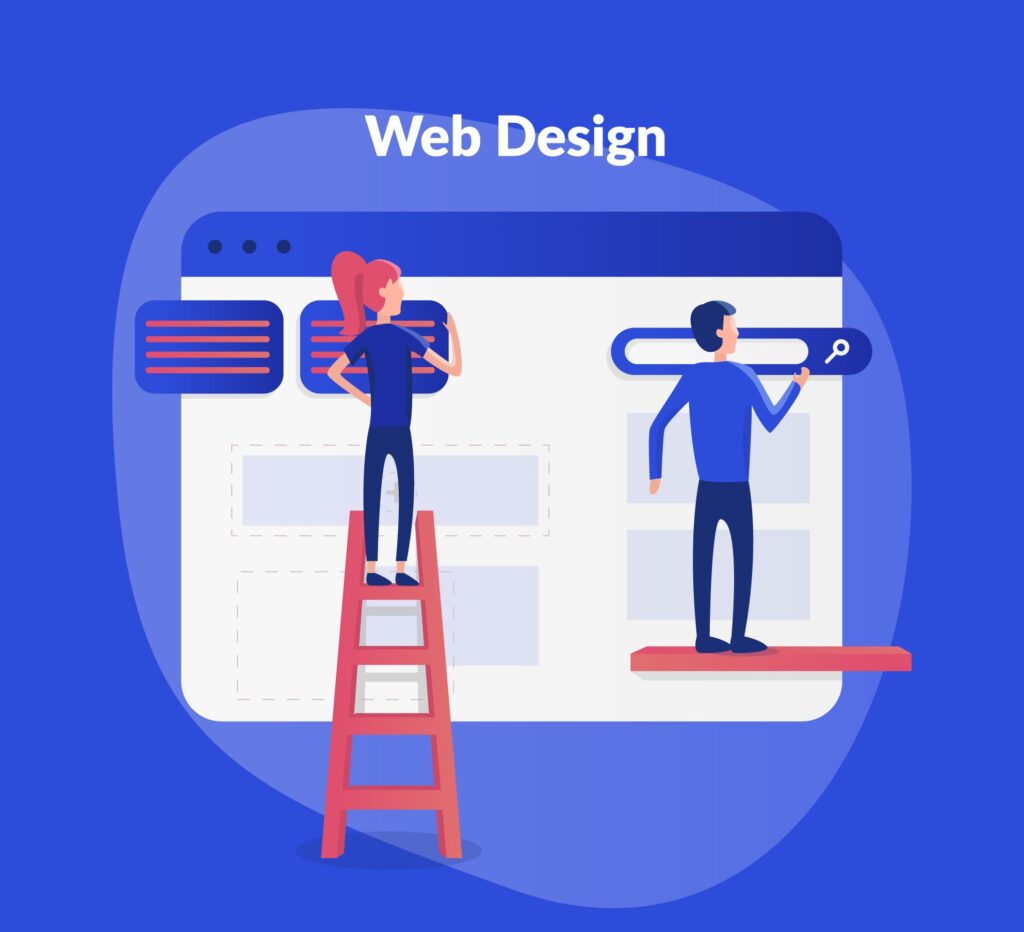
Since running a business may be a hectic and time-consuming activity in and of itself, many entrepreneurs may overlook the fact that their website is one of the most important components of their company. Once the website is up and running, it usually ends up at the very bottom of every business’s to-do list, despite the initial effort put into making it appropriate for the brand and appealing for people to interact with. Since at least 75% of consumers acknowledge that they rely their opinion of a company’s trustworthiness on the appearance of its website, research on consumer attitudes demonstrates the need of updating your website on a frequent basis. Regular website upgrades are among the most frequently asked questions at a marketing firm. Many business owners are hesitant to invest in updating their website’s technology and appearance since they might not immediately notice an increase in sales or revenue. Computer processing doubles every 18 months. This indicates that technology is developing at an alarming rate, and since sectors have extremely saturated marketplaces, it is crucial that your company makes every effort to stay up to date with the most recent advancements. While it’s crucial to make sure your brand and goods or services are accomplishing this, it’s as necessary to update your website frequently to demonstrate to both present and potential clients that your company is forward-thinking and creative. How do I know if my website needs updating? Realigning your website with your business aims and values is the most common reason for updating or redesigning it. This is typically accomplished by making minor adjustments to make sure your present website better serves your clients and your company’s mission and values. This is by no means the sole justification for updating your website; consider the following queries and see whether any of them relate to your company’s present state: If you answered yes to any of these questions then we’d say it’s pretty clear that you need an updated website! Do I need a refresh or redesign? A website update doesn’t have to involve completely revamping your site; it may be as easy as refreshing it with a few short updates and organizing it to make it easier to use. Without having to alter the general structure, you may update your website by making little adjustments that affect its visual appeal, such changing the fonts, upgrading your graphics, or frequently updating your content. It’s crucial to keep in mind that every website is a dynamic work in progress that will require multiple iterations to appropriately represent your business. As a result, you might be able to update your website multiple times over the course of a few years before looking to redesign it entirely at some point. When should i update my website A website redesign will take more time to finish and is a little more involved than a refresh. When redesigning a website, it’s common to make a total structural change or even move to a different platform, like Webflow from WordPress. Rebranding is another important reason to think about redesigning and building a new website. If your business has a new visual identity, it should be appropriately mirrored on all digital platforms, including your website. There is no one-size-fits-all solution when it comes to the question of whether and how frequently to renew your website. The frequency of website renewals and regular updates will vary depending on a number of factors, including the size of your business, the number of changes you make to your offerings, and technology advancements that could help your firm. When any of the following issues arise frequently when loading the website, that’s the best indicator that it’s time to update it: Our knowledgeable staff of designers and marketers at Dgazelle can assist you in determining whether and when your website needs to be updated. Our knowledgeable staff will collaborate with you to comprehend your company’s objectives so that we can provide adjustments that we believe will be essential and advantageous to your enterprise, incorporating the newest technological advancements and market trends. What to consider when updating your website Every business should be considering the following 6 things to decide if their website is due an upgrade: When last did you update your website “Has your website been updated in the last 5 years?” should be the first question your business asks itself. If the answer is no, you should think about redesigning your website instead of just making minor updates because it’s possible that your website isn’t giving both present and potential customers a user-friendly experience. We would advise updating or completely revamping your website every two to five years on average to keep it current and competitive. In the coming years, websites may require periodic refreshes and a complete redesign to remain current, given the rapid advancements in technology over the past ten years. Can you update your website in-house? Ensure that when you use an agency or company to build your website, you request access to the website to be able to make regular updates and changes to the content yourself. Having the ability to make your own website updates via a CMS is vital for important and timely announcements that your internal team can handle. If having access to the website yourself isn’t possible, you must make sure that the website developers you use to build the website are efficient and available to answer your questions promptly. Is your website mobile friendly? 4.3 billion people use mobile devices to access the internet, therefore having a mobile-friendly website is crucial. It is imperative that you have a mobile website that is fully responsive, easy to use, and has easily navigable buttons and readable, clear content. To be sure your customers can use your website without any problems, consider viewing it on your own mobile device before launching it. When testing the website, it’s important to check if users can simply navigate from page to page, discover the homepage,
How to Boost Your Website Speed with Image Compression
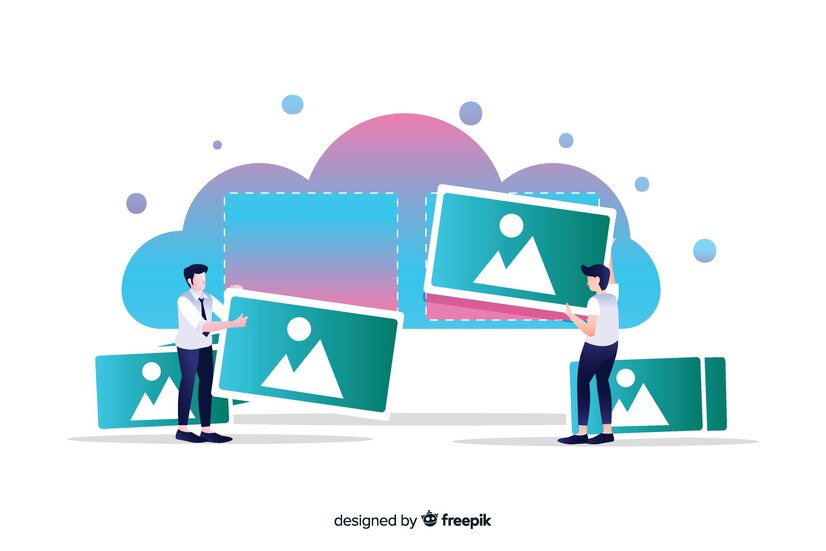
Are you sick and weary of your website’s page loads becoming slower? It may be time to investigate image optimization if that is the case. The pictures on your website are essential to giving visitors an interesting and educational experience.According to Google, websites that take longer than 10 seconds to load will see a 123% increase in bounce rates. Websites featuring photos are likely to have trouble speeding up their pages, which increases the amount of people that leave.We’ll outline the benefits of picture optimization in this blog post, along with a few simple and quick techniques to get your photos looking their best. Understand the Basics of Image Optimization Image optimization is the process of making an image more suitable for the web by making it smaller, lowering the download time, and speeding up page loading. This procedure entails adjusting the dimensions of your photographs, altering the image format, and compressing the file size.Making sure your website loads as quickly as possible is crucial. The optimization of the graphics on a web page is one of the main determinants of how quickly it loads. Inadequate optimization of pictures might result in slow loading times and poor page performance. Image optimization, when done correctly, can significantly reduce the size of your photographs in megabytes and kilobytes without changing how they look on a website. Images must be resized and compressed in order to optimize your website for page performance. You can decrease the amount of data that your photos use and the time it takes for a website to load by downsizing and compressing them. Additionally, you ought to think about spending money on a program that can optimize and compress photos automatically. In addition to saving you time, this will guarantee that your website loads faster than before. Tips on how to Optimize Image After learning the basics of picture optimization, let’s explore some recommended approaches. Thankfully, the process of optimizing photos for improved page speed is not too complicated. To help you get started, here are some pointers. Choose the Right Image Format The JPG, PNG, GIF, and SVG image formats are the most widely used. Every one of these file formats has special benefits and drawbacks. The majority of digital cameras and phones utilize JPG as their default image format. Because it offers a large variety of colors and resolutions, it works well for photos. It is less appropriate, though, for text or photos with sharp edges since compression can degrade image quality. Another well-liked image format that works well for graphics and logos is PNG. Although it has higher file sizes and doesn’t allow a wide spectrum of colors, it supports transparency and creates sharper edges than JPGs. GIFs, which allow up to 256 colors, are frequently used for basic animations and graphics. Nevertheless, they have smaller file sizes than other picture formats and do not support transparency. Lastly, for vector images that need a lot of details without taking up a lot of room, SVG is the best choice. Compress Your Images The method of lowering the amount of data your photographs require without changing how they seem on screen is called compression. It’s crucial to compress your photos before adding them to your website because this will significantly lower their file sizes and speed up page loads. There are numerous services and programs for image compression, including ImageOptim and TinyPNG. With little work on your part, these can optimize your photos. Resize Your Images Resizing your photographs before submitting them to your website is another method to minimize the amount of data they consume. This entails shrinking the image’s dimensions and pixel size to save screen real estate while maintaining a high visual quality. Images can be resized and cropped manually using a program like Photoshop or GIMP, or they can be automatically resized and optimized for you using a service like Kraken or Cloudinary. Use Lazy Loading Lazy loading is the process of loading images only when they appear in the viewport. This allows you to prioritize how your images load so that certain elements on a page can be displayed first for a faster user experience. You can use a plugin or write code using JavaScript and HTML to implement lazy loading. How to Find Image-Related Issues on Your Site Numerous testing tools are available to assess image-related problems and page load speed in order to guarantee that your website operates at peak performance and retains optimal efficiency. Google PageSpeed: You may use Google PageSpeed to find out how quickly your website loads, how well your images are optimized, and how to make your page loading times faster. Google Lighthouse: An open-source tool called Google Lighthouse lets you examine how well your website performs in a number of areas, including image optimization. It also offers thorough recommendations on how to enhance the functionality of your website. Pingdom: You may measure the speed at which your website loads from various places and the number of requests made for each image using Pingdom. GTmetrix: Similar to Pingdom, GTmetrix provides an in-depth analysis of your website’s performance and suggestions for improvement. It provides a thorough evaluation of your images’ loading speed and optimization. Conclusion By using the above advice, you can drastically cut down on the amount of time it takes for pages on your website to load, giving visitors a better experience and encouraging them to return. As we’ve seen here, image optimization is a frequently disregarded component of web development, yet it’s crucial to guaranteeing page performance and speed. Therefore, remember to include image optimization in your website approach. Make every pixel count, optimize your images to speed up loading times and enhance user experience. Discover how our expert image optimization tips can help boost your site’s performance and conversion rates today!
The Impact of Web Page loading Speed on E-commerce Revenue

For an e-commerce business, every second counts—literally. A website’s loading speed is a key determinant of user experience, engagement, and ultimately, conversion rates. When shoppers browse online stores, the time it takes for a page to load can mean the difference between a sale and an abandoned cart. Web page loading speed refers to the time it takes for the content of a webpage to fully appear on a user’s screen after they click on a link or type in a URL. This includes all elements, such as text, images, videos, and interactive features, becoming fully functional. Speed is typically measured in seconds, and in e-commerce, even a fraction of a second can have a significant impact. Importance of Speed in E-commerce In e-commerce, user attention is fleeting. Research shows that if a page takes longer than 3 seconds to load, 53% of mobile users will abandon the site . This is particularly concerning for e-commerce businesses, where every visit has the potential to generate revenue. The faster a site loads, the better the user experience, leading to higher engagement, more conversions, and better sales figures. The Relationship Between Loading Speed and User Experience First Impressions Matter First impressions matter in all aspects of life, and web design is no exception. A user’s first experience with an e-commerce site is shaped by how quickly the site loads. If the page lags, even by just a couple of seconds, it creates a negative first impression. Slow load times make the site seem unreliable or outdated, leading potential customers to quickly move on to competitors who offer faster, more efficient browsing. User Engagement and Retention Page speed not only impacts first impressions but also plays a crucial role in keeping users engaged. When a website loads quickly, users are more likely to stay longer, browse more products, and eventually make a purchase. Conversely, a slow site frustrates users, decreasing engagement and leading to higher bounce rates. Consistent loading delays can also impact customer retention—shoppers are less likely to return to a site where they had a poor experience, ultimately reducing customer lifetime value. The Role of Mobile Responsiveness With mobile commerce (m-commerce) growing rapidly, it’s essential for e-commerce websites to be optimized for mobile devices. Mobile responsiveness refers to how well a website adapts to different screen sizes and functionalities. Loading speed is even more crucial on mobile devices, as mobile users often have shorter attention spans and higher expectations for speed. According to Google, 70% of mobile users report abandoning slow-loading pages . Ensuring a fast, seamless mobile experience can drastically improve engagement and conversion rates. Impact of Loading Speed on Conversion Rates Statistical Insights: Speed vs. Conversions There is a direct correlation between loading speed and conversion rates in e-commerce. Studies show that for every additional second a page takes to load, conversion rates drop by 4.42% . This means that even a slight delay can significantly impact your sales. A page that loads in 1 second has a conversion rate of about 3.05%, while a page that takes 5 seconds to load sees a drastic decrease in conversion, dropping to 1.08%. Case Studies of E-commerce Sites Let’s look at some real-world examples. Amazon, the e-commerce giant, reported that a page load slowdown of just one second could cost them $1.6 billion in sales each year . Similarly, Walmart saw a 2% increase in conversion rates for every 1-second improvement in page load time. These case studies clearly show how page speed directly influences a company’s bottom line. Factors Influencing Conversion Rates Several factors contribute to this relationship between speed and conversions. One primary factor is user expectations. With fast internet speeds widely available, users have become accustomed to near-instantaneous loading times. Any delay, even milliseconds, can trigger frustration. Additionally, loading speed impacts user trust—if a site loads slowly, it appears less professional, making users hesitant to input payment information or complete a transaction. Financial Implications of Loading Speed Revenue Loss Estimates Slow loading times can result in significant revenue losses. A report by Google suggests that an e-commerce site with a 3-second delay can lose up to 40% of potential customers . To put this in perspective, if your site generates $100,000 per month, a 1-second delay could cost you $2,500 in lost sales monthly, or $30,000 annually. Cost-Benefit Analysis of Speed Improvement Investing in improving your site’s speed may seem costly, but the long-term benefits far outweigh the expenses. Speed optimization efforts, such as compressing images or using a Content Delivery Network (CDN), typically involve upfront costs, but the resulting increase in conversions and revenue can cover these costs in a short time. A fast website not only boosts sales but also enhances customer satisfaction, leading to higher retention rates and more repeat purchases. Long-term Financial Impact on Customer Loyalty Customer loyalty is closely tied to user experience. When a website consistently delivers a fast, smooth shopping experience, customers are more likely to return, increasing their lifetime value. Conversely, slow speeds lead to frustration and distrust, driving customers to competitors. The long-term financial impact of poor loading speeds extends beyond immediate sales losses—over time, slow websites erode brand loyalty and diminish customer retention. Strategies for Improving Web Page Loading Speed Technical Solutions: Compression and Optimization One of the most effective ways to improve loading speed is to compress and optimize website elements. Large images and videos can slow down load times significantly. Using tools to compress these files without sacrificing quality can drastically improve performance. Additionally, enabling browser caching allows users to store elements of your website on their device, so the site loads faster on subsequent visits. Content Delivery Networks (CDNs) and Hosting Choices A Content Delivery Network (CDN) is another essential tool for optimizing speed. CDNs distribute your website’s content across multiple servers around the world, ensuring that users can load your site from a server that is geographically close to them. Choosing a reliable hosting provider that offers robust speed capabilities is also critical
What is progressive web app and how it can affect your E-commerce website
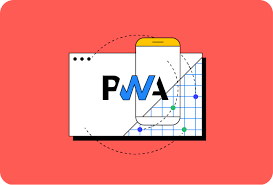
With cell phones now ubiquitous in nearly every aspect of our lives, technology has revolutionized how we shop. Consumer demand for better and more engaging user experiences, fast load times, quick access to knowledge, and network independence is increasing rapidly and continuously. There is only one way to curb all these demands permanently: Progressive Web Apps for eCommerce. Progressive Web Apps are getting so much hype in recent years. Many experts even helm it as a game-changing solution for eCommerce enterprises. Being a relatively new technology, PWA is getting immediate traction from many big brands. In fact, big brands are producing incremental results after building PWA for business. But small and medium businesses are still lagging in starting this technology. What are Progressive Web Apps? Progressive Web Apps, or PWAs for short, are web apps designed to function well on desktop and mobile platforms. PWA for e-commerce enables users to access information from any place or device, which makes your website more user-friendly. The greatest aspects of native mobile apps are combined with the ease of use and accessibility of the web in e-commerce PWAs. They are perfect for companies that wish to offer their clients a quick, dependable, and interesting online experience because they are essentially responsive websites that have been optimized for performance and user experience. Features of PWA Some of the key features that make Progressive Web App eCommerce so appealing for businesses include: Add to home screen: A website or app’s user interface (UI) can be added to a customer’s device’s home screen, just as with a native app. This makes it simple for them to locate and utilize your site even if they don’t have access to the internet. Offline mode: Offline support for PWA eCommerce is identical to offline capability in native apps. This means that your consumers will still be able to access your site even if they lose their internet connection. Content Personalization: Cache memory to save the content of a webpage & use it even without internet connectivity. This reduces the page loading time to a marginal value. Instant loading: An eCommerce PWA is a web application optimized to load quickly and without fail across a broad range of network connections. This means that your consumers will never have to wait for your site to load, no matter where they are. Push notifications: Push notifications can keep your consumers up to date on new items, sales, and other vital information. Interactive web interface: The PWA elevates the user experience of the website with its interactive user interface and intuitive layout. It gives an impression of native mobile apps to your visitors. Benefits of PWA in e-commerce Getting a good performance level is essential for any e-commerce business to succeed. If your site is difficult to find or takes too long to load, they will probably visit a competitor. Progressive Web App e-commerce can help here. E-commerce websites using Progressive Web Apps are fast, dependable, and visually appealing, which makes them the perfect choice for businesses trying to improve their CX, UX, and SEO rankings. There are several advantages to using a PWA in eCommerce for enterprises, including: How PWA features improve your eCommerce business? Every online store, new or existing, should consider adopting PWA eCommerce to stand out from competitors. With mobile traffic now at 60% and conversion rates at just 16%, there’s immense potential for growth. Progressive Web Apps (PWA) offer a fast solution, with Google reporting a 20% revenue boost and mobile conversion rates doubling for eCommerce businesses that switch to PWAs. Optimize now for the best mobile shopping experience! Push notification Push notifications on eCommerce PWAs offer direct engagement, reaching users on their mobile devices for a highly interactive experience. Unlike emails, push notifications capture attention immediately. With 96% of users browsing anonymously, lacking contact information, push notifications fill the gap, allowing businesses to engage customers without needing emails or accounts. This makes them a powerful tool for boosting user interaction and driving conversions efficiently. Better user adoption via home screen installation Progressive Web Apps (PWAs) offer a seamless user experience, combining website functionality with native app convenience. They can be installed directly on a user’s home screen for easy access. According to BigCommerce, Flipkart’s PWA sees a 60% re-install rate, showcasing the power of PWAs in user adoption. With 60% of users allowing push notifications, PWAs offer a higher engagement rate than email, enhancing both user experience and marketing opportunities. Superb instantaneous performance Users increasingly expect faster speeds, especially with mobile-first usage on the rise. A survey shows 53% of visitors abandon sites after 3 seconds of load time, with conversion rates dropping by 21.8% per second. PWAs deliver superior performance, loading in under a second, offering an “instant” feel through client-side caching. Google reports that faster sites see 70% longer sessions and 35% fewer bounces. PWAs also reduce server space, data usage, and storage needs, enhancing both speed and efficiency. Improved SEO with eCommerce PWAs eCommerce PWAs are web-based, meaning all content is indexed by search engines, unlike native apps. This enhances SEO, allowing users to access cutting-edge digital goods across devices. Fast loading times, reduced bounce rates, and engaging user experiences naturally boost SEO rankings. When well-designed, Google prioritizes PWAs over regular websites. However, optimizing the technology behind PWAs is crucial, as their reliance on JavaScript requires proper indexing. With server-side rendering, developers can ensure seamless SEO performance, making PWAs a powerful tool for improving search rankings while offering a superior user experience. higher conversion rates when using a PWA for eCommerce Higher conversion rates are the result of improved user experience. If an online store can remove friction and hassles, customers will be able to effortlessly accomplish their goals. In the end, it all comes down to giving your clients a better experience. The potential that eCommerce PWAs present are quite exciting. Instead of worrying about how things will change in 2023 and beyond, now is the ideal moment to take advantage of
Strategic Spending: Capitalizing on Your Website Design for Long-Term Gains

What a company or any brand spends in creating or updating its website is known as website development costs. These costs can vary accordingly. A basic website can be put together for the cost of a small program and of writing the content. One may also spend a great deal of money on a website with custom-designed graphics and interactive features. How much an organization spends on website development costs depends on the total business it can expect from a well-presented website. It will also affect the organization’s reputation and overall profit. It is an adaptable tool that accomplishes a number of tasks, including promoting your business, increasing sales, and encouraging client interaction. Due to the perception of high expenses, investing in website design may appear intimidating for many organizations, particularly small and medium-sized firms (SMEs). Still, a well-thought-out investment in your website can yield significant long-term gains. In this article, we’ll go over how to make the most out of your website by keeping a design that changes with your business, making strategic design decisions, and weighing the costs and benefits of your initial investment. Understanding the Value of Website Design The Role of First Impressions It takes less than a second for users to form an opinion about your website. This split-second judgment is driven largely by visual elements. In the digital age, first impressions have a direct impact on user trust. 94% of users’ first impressions are design-related. If your website looks outdated or difficult to navigate, users may question the credibility of your brand, leading to higher bounce rates. Design also taps into user psychology. The layout, color schemes, typography, and images all influence how visitors feel about your business. 38% of users will stop engaging with a website if the layout is unattractive. In contrast, well-crafted visuals can increase user retention by creating a sense of familiarity and professionalism. Incorporating psychology-driven design elements helps foster trust, resulting in higher engagement and potential conversions. Website Design as a Business Asset Many business owners underestimate the long-term value of quality website design, seeing it merely as an expense rather than an asset. In reality, a well-designed website can directly support business goals. For instance, companies with a user-centric website design can improve customer satisfaction, which in turn boosts revenue. As a business asset, your website contributes to customer acquisition, retention, and overall brand growth. Several case studies highlight the correlation between design improvements and increased return on investment (ROI). Improved navigation and enhanced mobile responsiveness have shown a positive impact on sales metrics. By viewing website design as an ongoing business asset, you position your company to reap long-term rewards. Key Elements of Effective Website Design A well-designed website isn’t just about aesthetics; it’s about creating a user-friendly experience that encourages interaction. Key design principles include simplicity, consistency, and clarity. Users should find it easy to navigate, with intuitive menus and clear calls-to-action guiding their journey. Additionally, loading speed affects both user experience and search engine optimization (SEO). Google’s algorithm factors page speed into rankings, and studies have shown that slow load times can result in a 7% drop in conversions. Tools like Google PageSpeed Insights can help you evaluate your website’s performance and identify areas for improvement. Cost-Benefit Analysis of Website Design Investments Initial Costs vs. Long-Term Savings Upfront website design costs may include hiring professionals, purchasing software, and securing hosting services. However, these costs are offset by long-term savings. For example, investing in a well-optimized design reduces bounce rates, leading to more user engagement and sales. Furthermore, a thoughtfully designed site can lower customer service costs by offering intuitive navigation and self-service options for common queries. When calculating the cost of website design, consider the lifespan of the design. A website that functions well and is easy to update will pay for itself over time through reduced maintenance expenses and increased traffic. Measuring Return on Investment To fully understand the benefits of your website investment, it’s essential to measure ROI. Metrics such as page views, bounce rates, conversion rates, and average session duration can help you assess performance. Tools like Google Analytics offer insights into how users interact with your site, while Hotjar enables heatmaps to visualize user behavior. Calculating ROI from design improvements may also involve tracking revenue changes linked to design updates. For example, if your new design improves the user experience, leading to higher conversions, you can directly attribute that revenue boost to your website design efforts. Budgeting for Future Enhancements Website design is not a one-time investment. As your business grows, so should your website. Allocating a portion of your budget for periodic updates ensures your site remains functional and relevant. Technology upgrades, such as integrating new plugins or enhancing security features, are necessary to keep your site running smoothly. Building flexibility into your design budget allows you to respond quickly to new trends or shifts in user behavior. Regular updates, along with a proactive approach to design improvements, keep your website ahead of the competition. Strategic Design Decisions for Business Growth Aligning Design with Brand Identity Your website is an extension of your brand identity. Consistent branding across your website helps users recognize and trust your business. Elements such as logos, color schemes, and typography should align with your overall brand strategy. Moreover, design choices can communicate company values. For instance, a business that prioritizes sustainability might use earthy tones and eco-friendly imagery to convey its commitment to the environment. Thoughtful design ensures your website acts as an ambassador for your brand. User-Centric Design Approaches A user-centric design approach focuses on meeting the needs and preferences of your target audience. Understanding who your users are and what they expect from your website is key to creating a meaningful experience. Conducting user research, utilizing usability testing, and implementing an iterative design process can help identify areas for improvement and guide design decisions. The process of gathering feedback and refining design elements ensures that your website evolves alongside your users’ expectations.
Design Professional Websites Faster and Easier with Leading No-Code Website Builder

Web development tools such as no-code website builders let users of different experience levels make websites without requiring them to know how to code. The phrase “No code required” is frequently used to emphasize this feature. This doesn’t make things any simple, despite what the public believes. However, the design and development process is accelerated and made more effective. To put it simply, in order to build a strong website, you will still need to be knowledgeable about the fundamentals (and even more advanced) of web design and development. You will achieve much better outcomes faster by using a no-code website builder, but you will still need to put in a lot of late nights to get there. For this reason, there are a plethora of design agencies like Dgazelle digital that specialize in using no-code builders and assist people and companies in building websites. Benefits of using No-Code Website Builder The goal of no-code website builders is to make things easy. Simple drag-and-drop interfaces are just one example of this simplicity. The barriers to entry that frequently discourage people with little knowledge in design from pursuing the building of their own websites are removed by this ease of use. Things to Take Into Account While Selecting a No-Code Website Builder When you decide to design your website without coding, you may want to factor in things like ease of use, the amount of accessible templates (and if they are included or if there are extra premiums on templates) and customization options. In addition to making sure your no-code tools include capabilities that increase the possibility of future growth for the demands of your website, you should search for a no-code development platform that offers simple design tools. Webflow Designers, company owners, entrepreneurs, and other potential users may all construct websites with Webflow without knowing any code. Webflow makes web development easier by enabling people, regardless of skill level, to create and publish professional-looking websites. FeaturesWebflow provides a wide range of functions. If you enjoy tinkering with the front end of websites, Webflow’s “Visual Canvas” lets users alter the HTML, CSS, and JavaScript code that makes up a website. Numerous third-party tools and services, including marketing, analytics, and e-commerce, are integrated. Pros Webflow’s user interface caters to technical users but is passable for novices. Few other platforms can match the design versatility it provides, giving users total control over CSS properties and class systems to create distinctive and eye-catching webpages. ConsWebflow has certain drawbacks for inexperienced users, albeit these are somewhat offset by the fact that it requires no coding. It can take a lot of time to get meaningful results with Webflow because users have to commit to understanding and becoming proficient with its features. CostingA variety of pricing options are offered by Webflow, each designed to satisfy the requirements of a particular user type. One feature that many no-code website builders lack is the ability for prospective customers to choose the plan that best fits their needs in terms of budget and platform scalability. For the majority of consumers, Best For Webflow is unquestionably a fantastic pick, but it’s especially worth considering for individuals with some background in web building and options for diverse user types. WordPress Originally intended for blogging, WordPress is an open-source content management system (CMS) that has expanded to accommodate a wide range of web content formats. With plugins like WPBakery and Elementor, WordPress grows from a decent content management system to one of the best no-code website builders. Features WordPress allows you to edit your content in real time with block-based editing. Additionally, WordPress has a wealth of customization choices. Users can choose from pre-selected themes or create a new one from scratch, customizing colors, fonts, layouts, and other features to fit their own tastes. Advantages WordPress provides all the tools and functionality you need to start an e-commerce store, showcase professional portfolios, or start a personal blog. Many people profit from its free and open-source nature, but there may be additional costs like hosting and plugins to get the same functionality as other no-code website builders. Cons WordPress is quite user-friendly, but there is a learning curve for those who want to learn how to use its more sophisticated capabilities. Although it may require some time to learn, WordPress is a great resource for anyone interested in learning about website creation. Because WordPress customisation requires a certain amount of technical skill, it could potentially be a drawback for some users. Costing Although WordPress is free to use, there may be additional fees for hosting, themes, plugins, and other services, such as payment processing if you operate an online store. The cost varies according to the service you select and your unique requirements. Squarespace Squarespace distinguishes itself by serving a diverse clientele, including creatives and companies. This place genuinely has something to offer everyone. You may easily establish a web presence with Squarespace! Features Squarespace offers several tools, such as drag-and-drop capability and configurable templates, that simplify the online development process. If you’re interested in e-commerce, Squarespace makes it simpler than most other no-code website builders to set up online businesses and manage inventory. Advantages Squarespace’s visually stunning templates are one of its primary selling points for design-focused web projects. One of Squarespace’s bundle options is hosting. Hosting is a huge plus if the goal is not technical in the slightest. Cons Even with all of Squarespace’s advantages, some may feel that, in comparison to other platforms, its personalization choices are a little limited. Compared to other no-code website builders, you might find their customer assistance to be less responsive. Costing Squarespace provides pricing options to accommodate various user needs and budgets. Options on the show vary from sophisticated commercial plans to simple personal plans. Wix One major participant in the ecosystem is Wix. Wix tends to draw in people who are just beginning the process of creating websites, but it also offers capabilities that let users do more than simply create
7 Little-Known Tricks to Boost Your Website Speed Today!
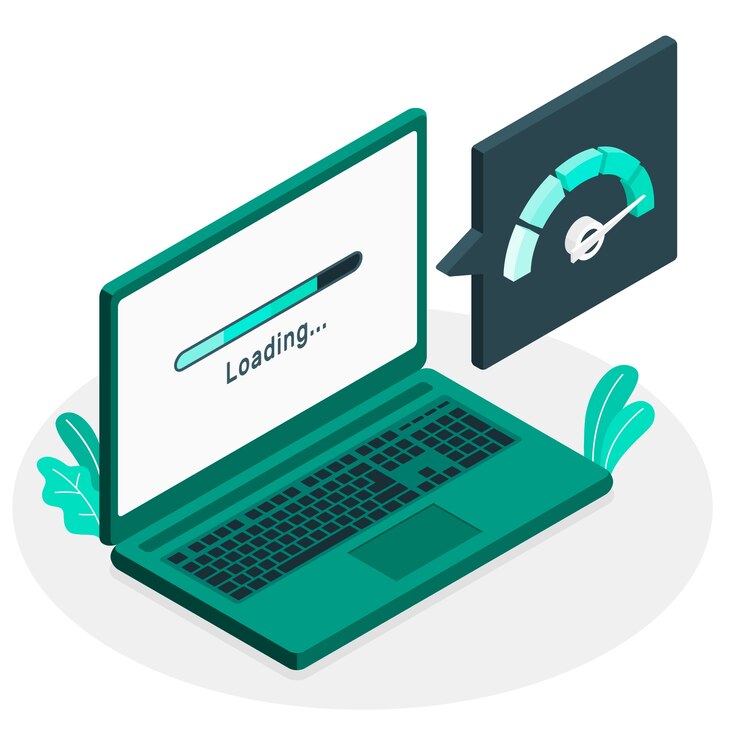
Increasing the website speed makes sense and is way important than you think, think about these user anticipations: When a website takes longer than three seconds to load, 40% of users leave. and 47% of users anticipate a website to load in under two seconds. But in reality, the average web page load time is 2.5 seconds on desktop and 8.6 seconds on mobile, Numbers obviously don’t lie, website visitors may not be experiencing a good user experience if they expect your page to load in two seconds or less but it is not. It is certainly time to review your website’s overall speed and user experience. Possibly with the use of a Real User Monitoring tool. Why website speed matters People anticipate a quick website, because It all boils down to control, a core factor in user experience. Humans dislike having no control over their surroundings. We are easily distracted and prone to impatience. And this shows itself in website too, users who experience a faster page load speed feel as though they have more influence over the website—rather than it controlling them. And this also help your SEO ranking (In addition, maintain the health of your organic search rankings; since 2010, Google has included page load speed as a key component in their algorithm). So when building websites, you should not just focus on the assets and style of the website but most importantly be focusing on improving overall website speed, it’s the entire design process. Here are my tips on how to speed up your website easily: 1: Begin by thinking about the webpage’s objective. What is your page’s objective? Do you want users to enter their email address or sign up for a free trial on your website? You’ll be in the best position to make adjustments if you start with the goal you have in mind for that page. Prior to even starting to write scripts, chop HTML, compress photos, or build up visuals, it’s critical to take the time to thoroughly understand the objectives of all parties involved 2. While content is important, don’t forget about the layout! The goal of information architecture (IA) is to efficiently and sustainably organize, structure, and classify content. Text loads far more quickly than images and other types of media. Reducing the amount of media on your website may sometimes be the solution to speeding up page loads. First, ask yourself if you really need this picture instead of text. What good does the media offer? I won’t go into the benefits and drawbacks of removing or leaving media on your website. But think about “What’s the goal of the page,” and make sure the media you choose takes this into account. Front-end development, interaction design, user interface design, and content strategy are all influenced by good IA. Investing time on your information architecture will eventually result in better-structured content, design, and code, which will help your website load faster and function more efficiently. It will also boost your SEO efforts, as Google will regard your excellent IA as extremely valuable and award you with a higher SERP ranking. 3. Instead of using images, use CSS. With CSS (Cascading Style Sheets), it is possible to distinguish between meaning and appearance. Excellent use in cases where a page’s loading time is sacrificed for large, high-quality images. Two prominent examples are websites for eCommerce and photography. Large, gorgeous photos and a quick-loading website are what most clients seek. If you work with clients in these areas, it’s worthwhile to learn CSS so that you may generate visually stunning content without requiring photos. Your page will load faster and perform better! Note: It’s important to keep the size of your style sheets to a minimum; there’ll be less to load. However, if you do use images, make sure to choose the right format for the job 4. Optimize your photos to increase website speed When optimizing photos, there are a few things to take into account: Which image format is better will depend on the type of image and how it will be utilized. Select the appropriate one from the list below to expedite your website: Try adjusting the quality, palette size, and other options to see which works best for each format. Eventually, you’ll discover which picture format minimizes page load time and speeds up your website. 5. Make your design mobile-friendly. Compared to desktop users, mobile users often have distinct goals and prefer information in short, easily absorbed bursts. Since so many mobile users are having trouble loading webpages, it’s a really simple technique to obtain an advantage over competitors. This is a short list of easy improvements to improve the usability of your mobile website. 6. Minimize the use of plug-ins! Have you ever worked on a website that had so many plugins installed that you were unsure of what each one did? While plugins offer fantastic additional functionality, an overabundance of them may be the main source of a slow website. When it makes sense, once again take into account using CSS instead of plugins. This will provide you the same functionality or effect without the hassle of possible crashes and security issues. By removing any plugins that are unnecessary, you can drastically lower your running expenses in addition to boosting your website speed. 7. Test your website’s performance before releasing it into the public. It’s not necessary to always fly by blind. Before deploying, you can test your site with these fantastic free tools: Evaluating the overall speed of your website won’t take long at all. Evaluate each page separately and concentrate on the minor adjustments to make your website load faster. Conclusion It’s easy to overlook the user experience aspect of website design and development in favor of flashy graphics and intricate layouts. Control is key, and users who feel in control are happier. Use these suggested tips to impress even the pickiest customers when you need a website that loads quickly, looks good, and

